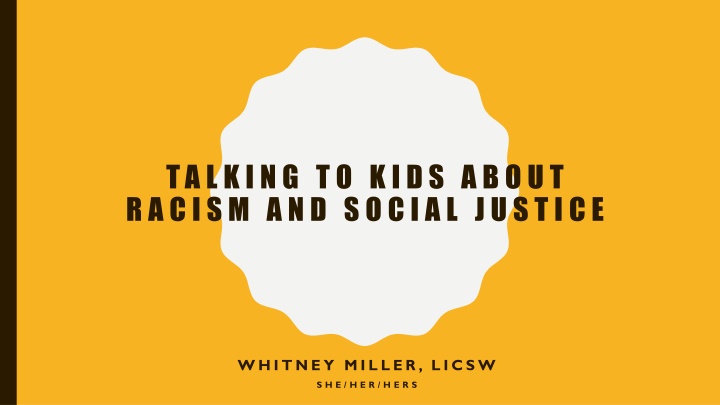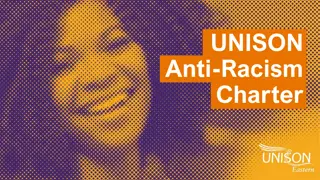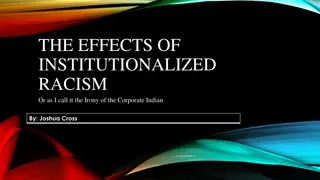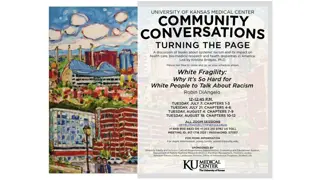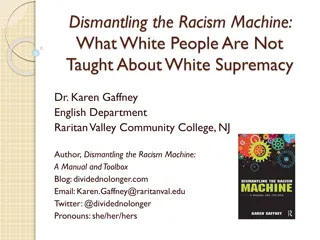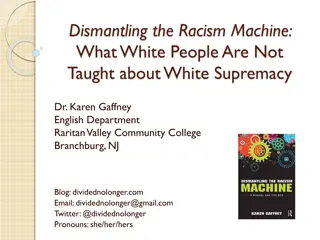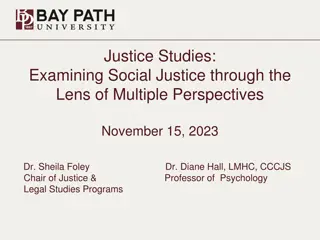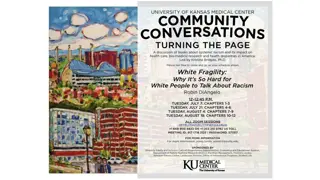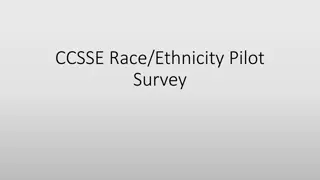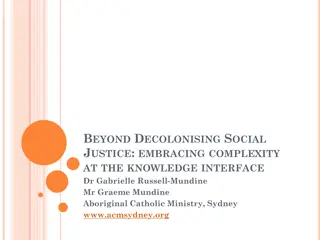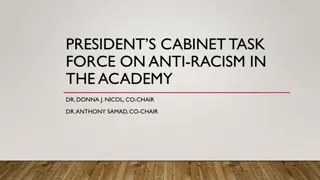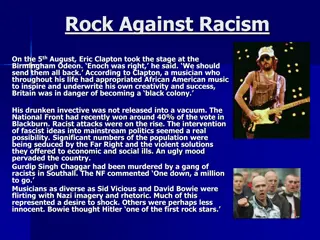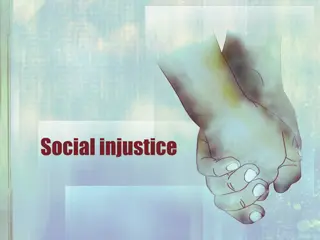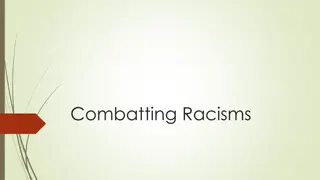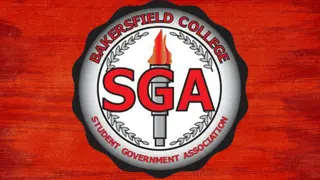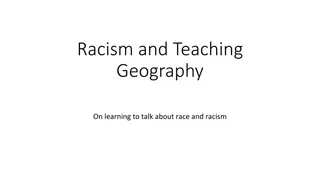Talking to Kids About Racism and Social Justice with Whitney Miller, LICSW
Discussing racism and social justice with kids requires acknowledging inequities, understanding biases, creating safe spaces, storytelling to unlearn dominant narratives, exposing children to diverse content, and engaging in social justice activities as a family. Whitney Miller emphasizes the importance of recognizing biases, fostering continual growth, and validating children's emotions in an effort to address racism and promote social justice effectively.
Download Presentation

Please find below an Image/Link to download the presentation.
The content on the website is provided AS IS for your information and personal use only. It may not be sold, licensed, or shared on other websites without obtaining consent from the author.If you encounter any issues during the download, it is possible that the publisher has removed the file from their server.
You are allowed to download the files provided on this website for personal or commercial use, subject to the condition that they are used lawfully. All files are the property of their respective owners.
The content on the website is provided AS IS for your information and personal use only. It may not be sold, licensed, or shared on other websites without obtaining consent from the author.
E N D
Presentation Transcript
TAL K ING TO K IDS ABOUT RA CISM A ND SO CIA L JU STICE WHITNEY MILLER, LICSW S H E / H E R / H E R S
We cannot use the color-blind approach with our children. This is ignoring inequities that exist for BIPOC and doesn t acknowledge our history and culture. I WAS RAISED TO NOT SEE COLOR, SO THIS IS WHAT I TEACH MY CHILDREN Recognize that there are families that have never had these conversations before, and for others it is incorporated into their daily living/lived experience Racism is prejudice + power and is woven through every system we encounter. *BlPOC Black, Indigenous, and People of Color
AS PARENTS, WE NEED TO RECOGNIZE OUR OWN BIASES AND ASSESS OUR OWN COMFORTABILITY WITH DISCUSSING RACISM AND SOCIAL JUSTICE. RECOGNIZE THAT GROWTH IS RECOGNIZE THAT GROWTH IS CONTINUAL. CONTINUAL.
CREATE SAFETY FOR KIDS Safety is both physical space and emotional space Each person s experience is personal and unique to them. Pain, frustration, anger, and confusion are common feelings we must create safe spaces for our children to process their emotions and feelings. Validate and be authentic, as parents we don t always have the right answers Allow your child to lead with questions, be mindful of your reaction no matter the question Example: My son hears a siren and wants to know if that is for the police or an ambulance. He knows that his uncle died while in police custody. He let s out a deep sigh when I tell him it sounds more like an ambulance. It is as if he is releasing built up pressure. this is a trauma response
STORYTELLING We must unlearn the dominant narratives that we ve been taught. Use historical examples of inequities and have conversations with your children about it. How do these stories translate to what is currently happening today?
EXPOSURE Take a look at what s in your home books, shows/movies your family is watching. Incorporate books, movies, and art into your home that are diverse and representative of different experiences Allow children to participate in social justice activities with you. Make it a family activity and commit to engage Local protests, vigils, cultural/community events Discuss the experiences afterwards
FAVORITE RESOURCES The Conscious Kid on Instagram PBS for Parents Talking to Young Children About Race and Racism https://www.pbs.org/parents/talking- about-racism Northwest African American Museum (Seattle) Racial Bias Test (Harvard Project Implicit) Race, Racism, & Mental Health Resources (BIPOC specific) Something Happened in Our Town: A Child's Story About Racial Injustice (Book) John Lewis Get in the Way (PBS Special) White Fragility: Why It s So Hard for White People to Talk About Racism by Robin DiAngelo (Book) Developmental Stages of Anti-Racism and Concrete Actions (the MEGA resource guide!)
